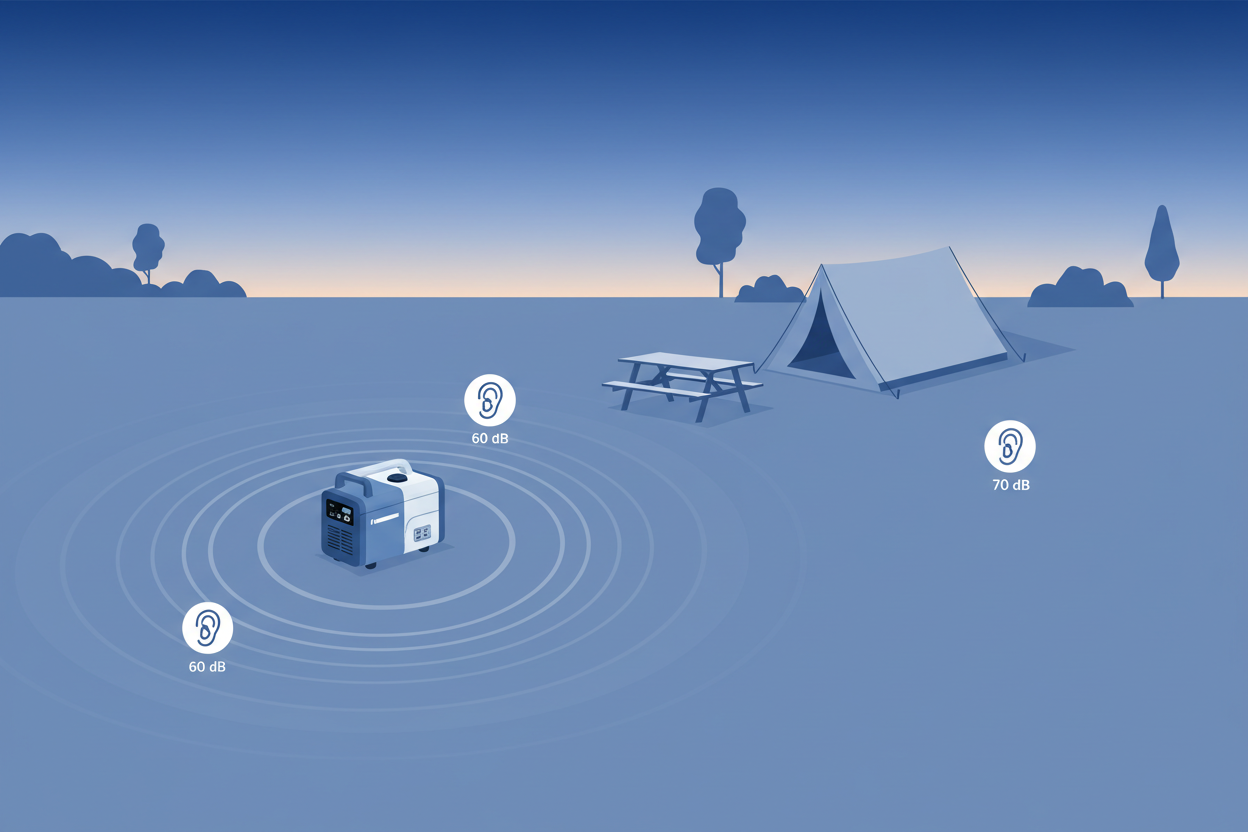How Quiet Should a Camping Generator Be for a State Park?
State parks often enforce strict noise rules to protect peaceful outdoor environments. Campers must choose a quiet generator that meets these limits during daytime and quiet hours.
Understanding decibel levels and distance placement helps you avoid campground complaints.

Typical State Park Noise Expectations
Many parks limit generator noise to levels between fifty and sixty decibels at rated load. These limits vary by state, ranger district, and individual campground rules.
Inverter generators usually meet these requirements because they adjust engine speed at light loads.
Understanding Decibel Levels in Campgrounds
Decibel values measure sound intensity on a logarithmic scale that multiples quickly. A difference of ten decibels represents a perceived doubling of loudness to human ears.
Quiet conversation sits around fifty to sixty decibels, while a loud cooler or vacuum exceeds seventy.
- 50 dB: quiet conversation level
- 55 dB: typical inverter generator in eco mode
- 60 dB: moderate load for a compact inverter unit
- 65 dB+: borderline for many campgrounds
Distance Reduces Noise More Than You Expect
Sound spreads outward in all directions, reducing significantly with distance from the source.
Moving a generator from ten feet to twenty feet can cut perceived noise almost in half.
Campers should place generators fifteen to twenty-five feet away when possible.
- Position on flat ground behind a natural barrier.
- Avoid corners or vehicles that reflect sound toward campsites.
- Point the exhaust away from the sleeping or cooking area.
How Eco Mode Helps Reduce Noise
Eco mode lowers engine speed when loads remain small, leading to quieter operation.
Most camping loads, including lights and chargers, draw minimal wattage and maintain low RPM.
High-draw appliances like coffee makers briefly increase noise during peak demand.
Park Rules and Quiet Hours
Quiet hours vary widely, but many campgrounds restrict generator use after early evening.
Typical rules allow daytime operation from morning to late afternoon with noise restrictions.
- Many parks allow generator use from 8 a.m. to 6 p.m.
- Few parks allow nighttime generator operation except for medical needs.
- Rangers may request shutdown for repeated noise issues.
Picking the Right Generator for State Parks
Inverter models offer the best combination of low noise, fuel efficiency, and clean voltage output.
Campers should compare rated noise levels at a twenty-three-foot distance, the industry standard.
Evaluating real-world recordings helps confirm comfort levels before outdoor trips.
Practical Tips for a Quiet Campsite
Simple placement adjustments can dramatically improve campsite comfort and reduce noise complaints.
- Use longer extension cords to position the generator farther away.
- Avoid placing units on wooden decks or metal surfaces that amplify vibration.
- Select soft ground like dirt or grass to absorb vibration noise.
Conclusion
Meeting state park noise limits ensures a peaceful camping experience for you and neighboring campers.
Choosing a quiet inverter generator and optimizing placement helps maintain compliance across all campgrounds.
